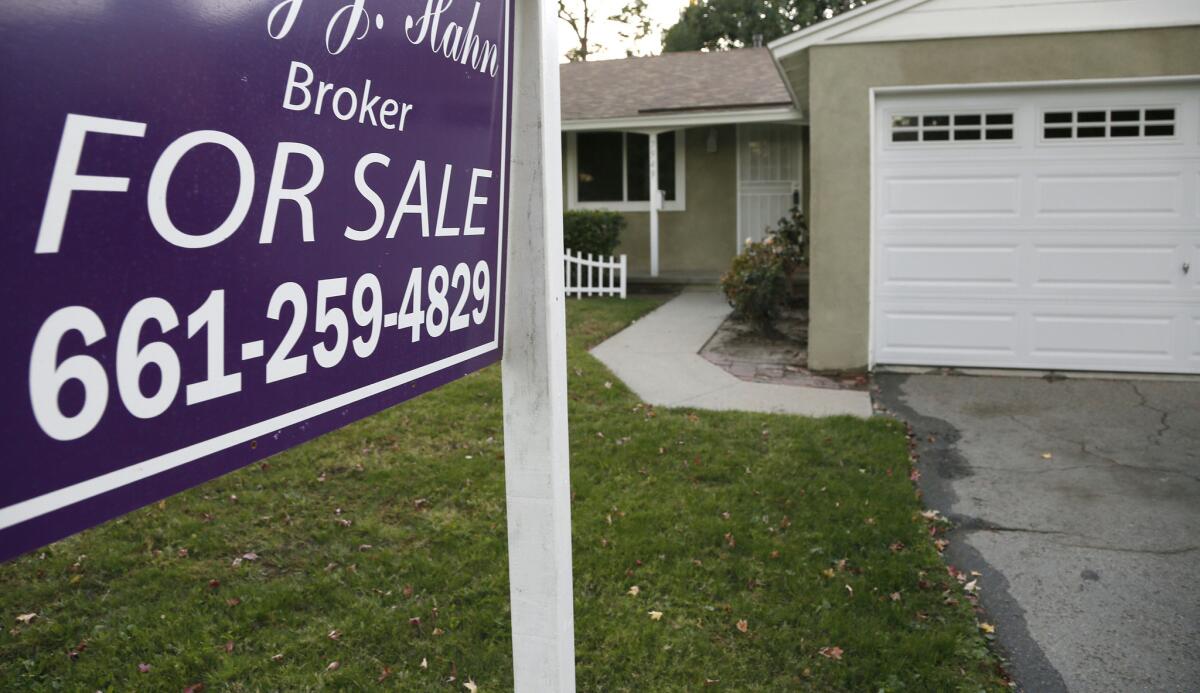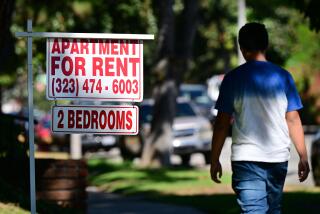Southland housing market mellows as sales fall, price growth slows

The Southern California housing market took a step back last month, as home sales fell and price gains slowed. But homeowners shouldn’t despair and would-be buyers might even rejoice, analysts say.
The slowdown signals a housing market that is continuing to normalize, potentially helping more middle-class families purchase homes as the economy improves.
After years of boom and bust, home prices and sales are now responding to the very thing they should: job and income growth, not loose lending standards or investors, economists and real estate analysts say.
“It is welcomed news,” said Esmael Adibi, director of the A. Gary Anderson Center for Economic Research at Chapman University. “We are going to be in this normalized market for two or three years.”
For now, many families are still struggling to afford a home after prices soared last year and continued to rise this year, albeit at a slower pace. Home sales in the six-county Southland fell 4.4% in October from a year earlier, research firm CoreLogic DataQuick said Wednesday.
Reflecting muted demand, the region’s median price slipped 0.7% from September to $410,000 last month. Compared with October 2013, the median price — the point at which half of homes sold for more and half for less — rose 6.8%, the smallest 12-month gain since June 2012.
Prices are no longer climbing at the 20% annual clip seen in 2013. That’s in large part because investors — no longer seeing a deal — are leaving the market. Absentee buyers — mostly investors — accounted for 23.6% of home sales in October, the lowest rate since October 2010. All cash deals also declined.
But given Southern California’s high housing costs, coupled with tight credit, many families have found it difficult to take advantage of the diminished competition.
“It was another sub-par month for Southern California home sales,” CoreLogic DataQuick analyst Andrew LePage said. “We’ve yet to see traditional buyers fill the void left by the drop-off in investor and cash buyers, which began in spring last year.”
Sales, however, are likely to rebound during next year’s spring home buying season as the economy keeps growing, analysts said. In September, the Inland Empire saw employment rise 2.1% compared with a year earlier; Orange County 1.8%; and Los Angeles County 1.5%.
Businesses should further boost hiring next year, and income growth — which has been extremely weak — probably will accelerate, Adibi said.
If incomes grow and mortgage rates stay low, families could find themselves with room to catch up. Meanwhile, most experts predict continued price appreciation next year, so homeowners would still reap some benefit.
The economy is improving and mortgage rates aren’t likely to soar, factors that will produce enough demand to make price declines extremely unlikely, said Stuart Gabriel, director of UCLA’s Ziman Center for Real Estate. Gabriel said he expects prices to appreciate 4% to 6% next year.
Richard Green, director of USC’s Lusk Center for Real Estate, is unsure middle-class incomes will grow.
There’s little evidence middle-class incomes are set to improve, he said, and price appreciation is likely to slow to 1% to 2% next year. If homeowners build less equity, they’ll find it harder to trade up to a bigger house, he said.
Given the weak price gains, Green said Americans should stop viewing their house as an investment and instead see it as a long-term home that they can afford throughout the life of the loan.
“You should make a hard calculation whether it costs more to own or more to rent,” he said.
Twitter: @khouriandrew







